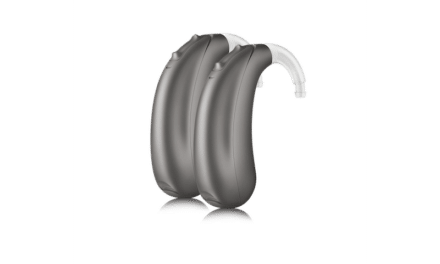RESEARCH | Dispenser Survey | December 2013 Hearing Review
2013 Survey of US Dispensing Practice Metrics
Part 1: Distinguishing features of “Best-in-Class” dispensing practices
During 2013, Phonak Hearing Systems commissioned Customer Care Measurement and Consulting, LLC (CCMC) to conduct a nationwide survey of hearing professionals to establish basic industry metrics. Similar studies had been sponsored yearly by Phonak starting in 2008. This benchmarking survey is designed to provide individual hearing practices with a tool they can use to compare their performance against industry standards. The industry benchmarks can be used as a basis for assessing and setting realistic, continuous, and fact-based improvement goals. Author’s Note: We would like to emphasize that CCMC assures complete confidentiality on individual respondent data. Individual data is never shared with anyone outside of CCMC.
Last year, Part 1 of the article “2011 Survey of US Dispensing Practice Metrics,”1 published in the August 2012 edition of Hearing Review, contained information on gross revenues, revenue sources, patients, and revenue benchmarks for dispensing practices. Part 2,2 published in the September 2012 edition of Hearing Review Products, covered hearing aid styles and pricing, fitting procedures, professional compensation, and marketing.
About This Year’s Survey
This article summarizes overall 2013 survey results and a special roll-up of results which highlight those “Best in Class” (BIC) metrics. Best in Class is the result of CCMC rolling up 2 years’ worth of data to see the differences in and processes and initiatives between the top one-third of higher-performing practices versus the bottom two-thirds. Importantly, BIC correlates to higher net profits among that top one-third of practices surveyed, regardless of their size.
Survey Methodology
A Web-based survey methodology was utilized. Responses were collected in April and May 2013. There were 268 respondents to the 2013 survey. References to “2012 results” and “2011 results” reflect actual practice performance data for these years; references to “2011 study” and “2010 study” reflect actual practice characteristics/opinions in the years these studies were conducted (eg, “How many full-time and part-time office locations does the practice have?” asked in the 2013 study and referring to office locations in 2013).
The most common type of hearing care practice in the United States was a single full-time location. The primary difference between 2013 and 2012 surveys was the composition of single full-time location practices. The percentage of solo professional practices decreased while there was a corresponding increase in single full-time location practices with two or more professionals.
Median respondent profile
- 60% female and 40% male;
- Median 17 years dispensing;
- 27% hearing instrument specialist (HIS); 65% AuD/PhD/audiologist;
- 28% HIS practice; 54% AuD/ENT practice; 14% hospital;
- 46% practice owners with a median 14 years at location.
Median practice profile
- Single, full-time location;
- Median 2 full-time fitters (up 1 compared to 2012);
- Median 3,060 hours/year (hours up 27% compared to 2012);
- Median 5 total FTEs (up 1 compared to 2012).
The rest of this article looks at those business metrics that are correlated with BIC practices.
Marketing Budget and Calendar

|
| Table 1. Marketing expenditures for 2011 and 2012. The median hearing practice spent 3% of its gross practice revenue for marketing or a median of $15,000. |
The median hearing practice spent a total of 3.0% of gross practice revenue for marketing, or a median of $15,000 annually (Table 10). The median amount spent on marketing from practices’ budgets was $12,000, representing 2.9% of 2012 gross revenue. The amount of marketing expenses subsidized by manufacturers and suppliers was a median of $1, however this represented overall a median of 0.0% of 2012 revenue. For the 51% of practices which actually received supplier subsidies for marketing (ie, excluding those practices which said that they received $0 of supplier support), the median amount was $7,500, representing 1.4% of gross revenue.

|
| Table 2. Marketing expenditures for 2011 and 2012. The median hearing practice spent 3% of its gross practice revenue for marketing or a median of $15,000. |
More aggressive marketers (highest 20% of practices on the basis of marketing spending ratio) spent 13.0% of gross revenue on marketing (Table 2). Multi-full-time location practices spent the most on marketing during 2012 in actual dollars; however, single full-time-location/solo professional practices spent more as a percentage of gross revenue.

|
| Table 3. Marketing planning by practice size. Two-thirds (67%) of Best-in-Class (BIC) practices had established marketing budgets and four-fifths (78%) of them had established marketing calendars. |
More than one-third (36%) of practices reported that they had developed a marketing budget before the start of each year and 39% had developed a marketing calendar (Table 3). Although over half of practices apparently made ad hoc decisions about marketing tactics during the year, the largest practices were much more likely to have developed marketing budgets/calendars.

|
| Table 4. Effectiveness ratings for 2012 marketing channels. 2012 average scores column base on: 5 = Very effective; 4 = Somewhat effective; 3 = Neither effective nor ineffective, etc. |
While historically, practices have reported spending the majority of their marketing dollars on traditional media (direct mail, newspaper ads), these received significantly lower effectiveness ratings than other marketing channels including patient referral programs and physician referral programs (Table 4).
Websites and Analytics

|
| Table 5. Practice Web sites and their features. Although the most frequent feature was an archive of hearing-related information, just over half of hearing care practice Web sites utilized search engine optimization or accepted patient inquiries. |
The vast majority (87%) of hearing care practices surveyed had a Web site (Table 5). Of these practice Web sites, 58% included hearing information archive functionality, 54% used search engine optimization (SEO), and 53% had a section to accept patient inquiries. Patient testimonials (47%) and educational videos (46%) were another common feature of practice Web sites. Only about one-quarter of the Web sites contained the capacity for appointment scheduling (29%), lead capturing for gathering names and email addresses of Web site visitors (28%), or a page for physicians (26%).
Professional Compensation
Of practices which employed full-time or part-time licensed hearing professionals, 50% compensated professionals with salaries and commissions, 25% paid salary only, 16% paid salary plus bonus, and 9% paid commission only (Figure 1). There was a large increase from 2012 to 2013 in the percent of professionals paid a salary plus commission, and corresponding decreases in the percent of professionals paid with a salary only, a salary plus bonus, and in the percent of professionals paid by commission only. About two-thirds (63%) of these practices provided health insurance to professionals. This was higher than in 2012, when 59% of these practices provided health insurance to professionals.

|
| Table 6. Percentage of practices that regularly conduct patient surveys, and the percentage of those conducting surveys that hare the survey findings with staff members. |
Surveying Patients; Sharing the Results
About one-third (37%) of practices regularly conducted patient satisfaction surveys (Table 6). Most of those conducting such surveys shared the results with their staff; however, there was a decrease from 92% in 2012 to 79% in 2013. A most effective strategy for using patient survey data to improve practice performance is to communicate survey results to the practice staff so that appropriate remedial policies can be implemented. Patient surveys have been strongly correlated to increased customer satisfaction.3
Recalling Patients for Service

|
| Figure 1. Compensation plans for licensed hearing professionals (fulltime and part-time). Salary plus commission compensation arrangements increased by 12 percentage points (ppts) in this year’s survey, while the other arrangements surveyed decreased by 3 to 6 ppts each. |

|
| Figure 2. Frequency of patient recall for cleaning of hearing aids. A full four-fifths of practices scheduled patients to come back to their offices on a regular basis, with most returning quarterly or semi-annually. |

|
| Figure 3. Frequency of patient recall for hearing testing. |
Eighty percent (80%) of hearing care practices scheduled recalls for cleaning (Figure 2). These practices scheduled quarterly cleanings for an average of 35% of their patients and scheduled cleanings on a semi-annual basis for 38% of their patients. The percentage of practices which scheduled quarterly cleanings increased from 32% in 2012 to 35% in 2013. Three quarters (76%) of hearing practices scheduled recalls for hearing tests.

|
| Table 7. Testing and recall by 2012 gross revenue per professional hour quintiles. Practices with higher gross revenue per professional hour were more likely to schedule hearing test recalls than practices with the lowest gross revenue per professional hour. |
There was generally no consistent relationship between gross revenue per professional hour of a practice and the intervals between patient visits; however, practices with higher gross revenue per professional hour were more likely to schedule hearing test recalls than practices with the lowest gross revenue per professional hour (Table 7).
Best In Class Characteristics
The following is a roll-up of the most significant variances in what Best in Class does differently than the bottom two-third of respondents to drive business. Overall, BIC practices engage in more marketing on a more consistent basis. Specifically, they are more likely to:
- Develop a formal, detailed marketing activities calendar;
- Develop a marketing budget each year;
- Develop patient and networking referral programs;
- Use more patient testimonials, lead capture system, Web site analytics and search optimization tools to improve marketing functionality of their Web sites;
- Compensate with salary plus commission on hearing instrument sales, and provide licensed hearing professionals with health benefits;
- Conduct patient satisfaction surveys and shared results with their staff, and
- Recall for hearing instrument cleanings semi-annually.
A BIC practice is more likely than a bottom two-third practices to do all of the above—and do them well. The survey suggests that the differences in net profit for these BIC practices as compared to the bottom two-thirds of practices is fairly dramatic.
The information in this article was submitted to HR by the Phonak Market Research Department, Warrenville, Ill, and adapted from the company’s publication Key Metrics of Hearing Practices: Results of the 2013 US Hearing Professional Practice Metrics Survey, which reports on the independent survey results conducted by Customer Care Measurement & Consulting, Alexandria, Va.
References:
1. Phonak Marketing. 2011 survey of US dispensing practices. Hearing Review. 2012;19(8):16-23.
2. Phonak Marketing. 2011 survey of US dispensing practices. Hearing Review Products. 2012;Sept:8-13.
3. Kochkin S. MarkeTrak VIII: Reducing patient visits through verification and validation. Hearing Review. 2011;18(6):10-12.
Original citation for this article: 2013 survey of US dispensing practice metrics. Hearing Review. 2013, December: 24-33.





